
Change, they say, is the only constant in life. Yet, when it comes to automotive icons like the Dodge Charger, change can stir emotions and spark debates among enthusiasts. The recent announcement of the 2025 Dodge Charger (LB), powered by the innovative HURRICANE engines, has ignited a wave of uncertainty among fans who have long cherished the roar of the iconic HEMI® V8.
The HEMI V8 has been synonymous with power, performance, and the very essence of muscle. Its deep rumble and formidable presence on the road have earned it a revered status in the annals of automotive history. So, when Dodge revealed plans to replace this legendary engine with a twin-turbocharged 3.0-liter (183 cubic-inch) I6 configuration, the reaction was mixed, to say the least.
Diehard fans of the “Brotherhood of Muscle” voiced their concerns on social media channels, expressing skepticism and even a sense of betrayal. Questions swirled: Could an I6 engine truly embody the spirit of muscle? Would the new HURRICANE engines live up to the legacy of the HEMI V8?
Creation Of The HEMI®-6 Engine –
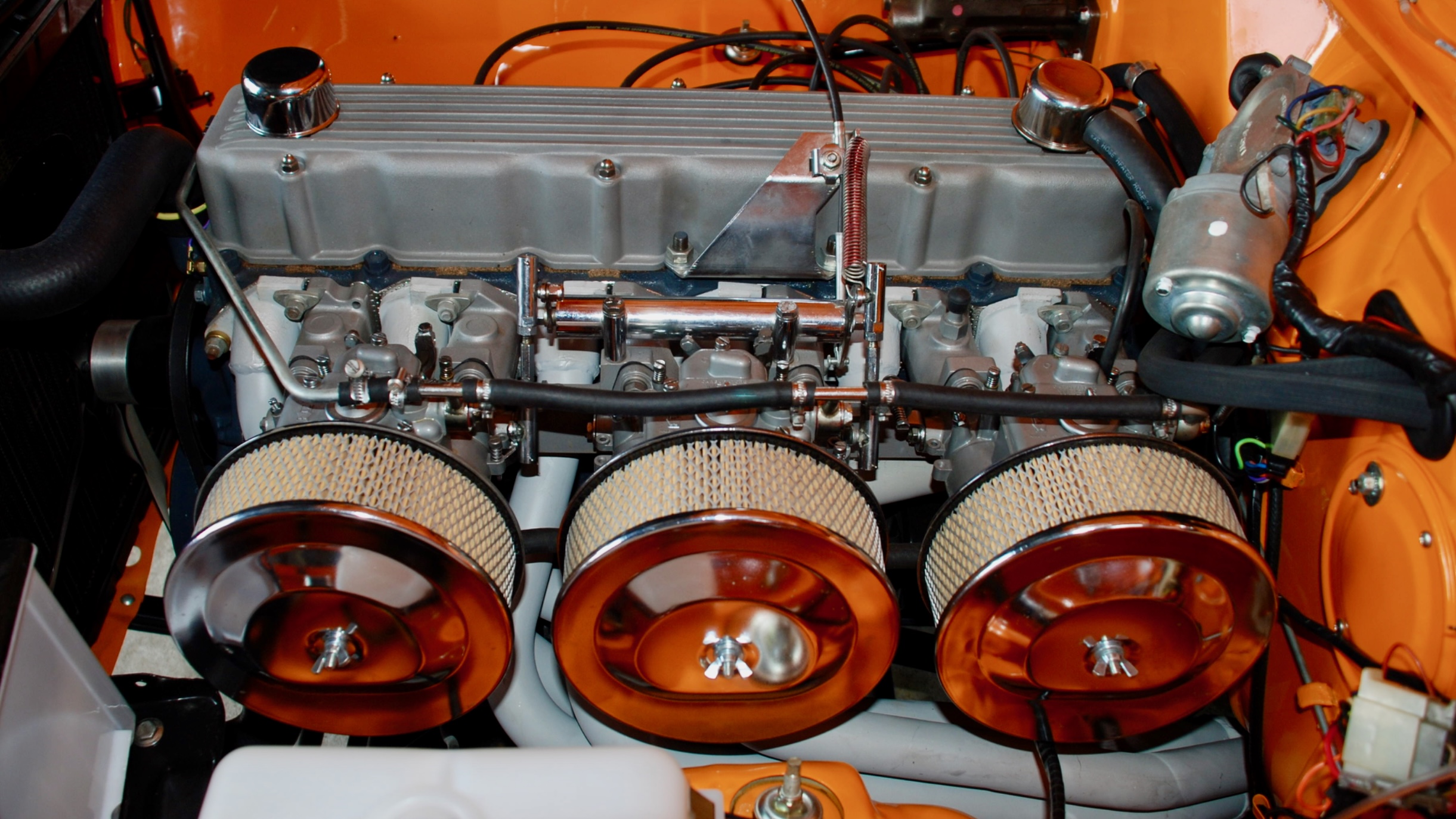
The story begins in the late 1960s when Chrysler Corporation in the United States embarked on a quest to develop an I6 engine to succeed the iconic Slant-6 in Dodge trucks. This endeavor led to the birth of the D-engine, a revolutionary design featuring thin-wall cast iron construction and a promise of improved performance and efficiency.
However, it was Chrysler Australia that would carry the torch of innovation forward. Recognizing the need for a new six-cylinder engine for the Australian Chrysler Valiant, Chrysler Corporation entrusted its engineers with the task of further developing the D-engine prototype. Thus, the stage was set for the birth of the HEMI-6 engine.
The HEMI-6 engine (also known as the HEMI-6 Pack) was a marvel of engineering ingenuity. Its pushrod overhead valve design featured combustion chambers with a low hemispherical shape, reminiscent of its V8 counterparts. This unique configuration allowed for optimal airflow and combustion efficiency, paving the way for impressive performance and power.
One of the defining features of the HEMI-6 engine was its splayed valve arrangement, with intake and exhaust valves angled apart along the crankshaft axis. This design, coupled with large intake valves and a robust crankshaft supported by seven main bearings, contributed to the engine’s reputation for exceptional performance, economy, and durability.
HEMI-6 Makes Its Debut In The Chrysler Valiant Charger R/T –
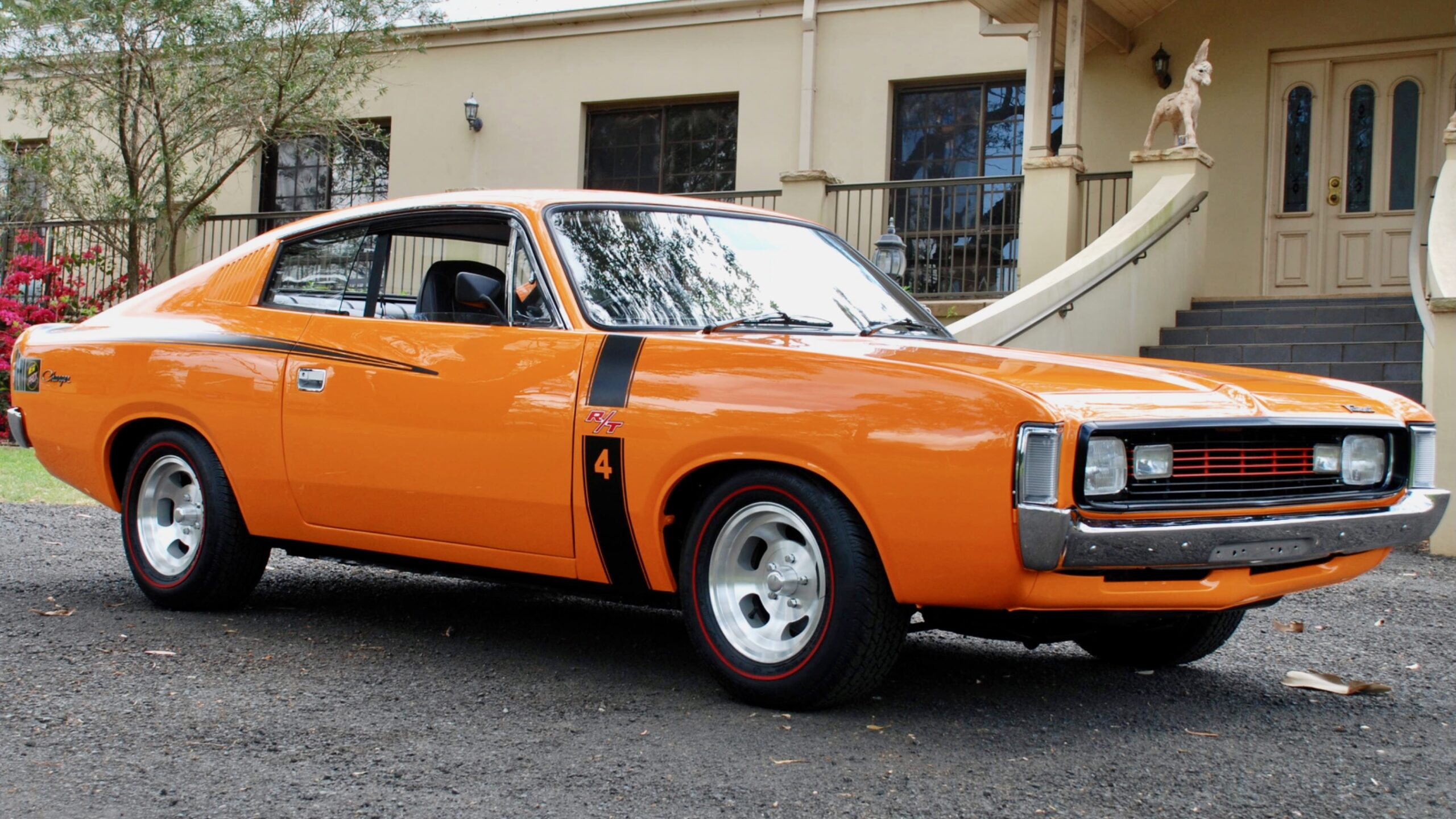
In 1970, the first variant of the HEMI-6 engine debuted in the VG-model Valiant, marking the beginning of a new era in automotive engineering.
In 1971, Chrysler Australia introduced the 4.3-liter (265 cubic-inch) variant of the HEMI-6 engine, marking a significant milestone in automotive engineering. This iteration retained the signature features of its predecessors while pushing the boundaries of performance even further.
The standard version of the 265 HEMI-6 churned out an impressive 203 horsepower (151 kW) and 262 lb.-ft. (355 Nm) of torque, showcasing its formidable power and torque delivery. However, it was the high-performance variant installed under the hood of the two-door E49 Valiant Charger R/T that truly stole the spotlight, boasting an outstanding 302 horsepower (225 kW) and 320 lb.-ft. (434 Nm) of torque.
With its aggressive camshaft, tuned exhaust headers, and triple DCOE sidedraught Weber carburetors, the HEMI®-6 Pack became synonymous with raw power and uncompromising performance. Its presence under the hood of iconic muscle cars like the Chrysler Valiant Charger R/T E49 elevated it to legendary status, capturing the imagination of enthusiasts around the world.
Today’s HURRICANE I6 Engines –
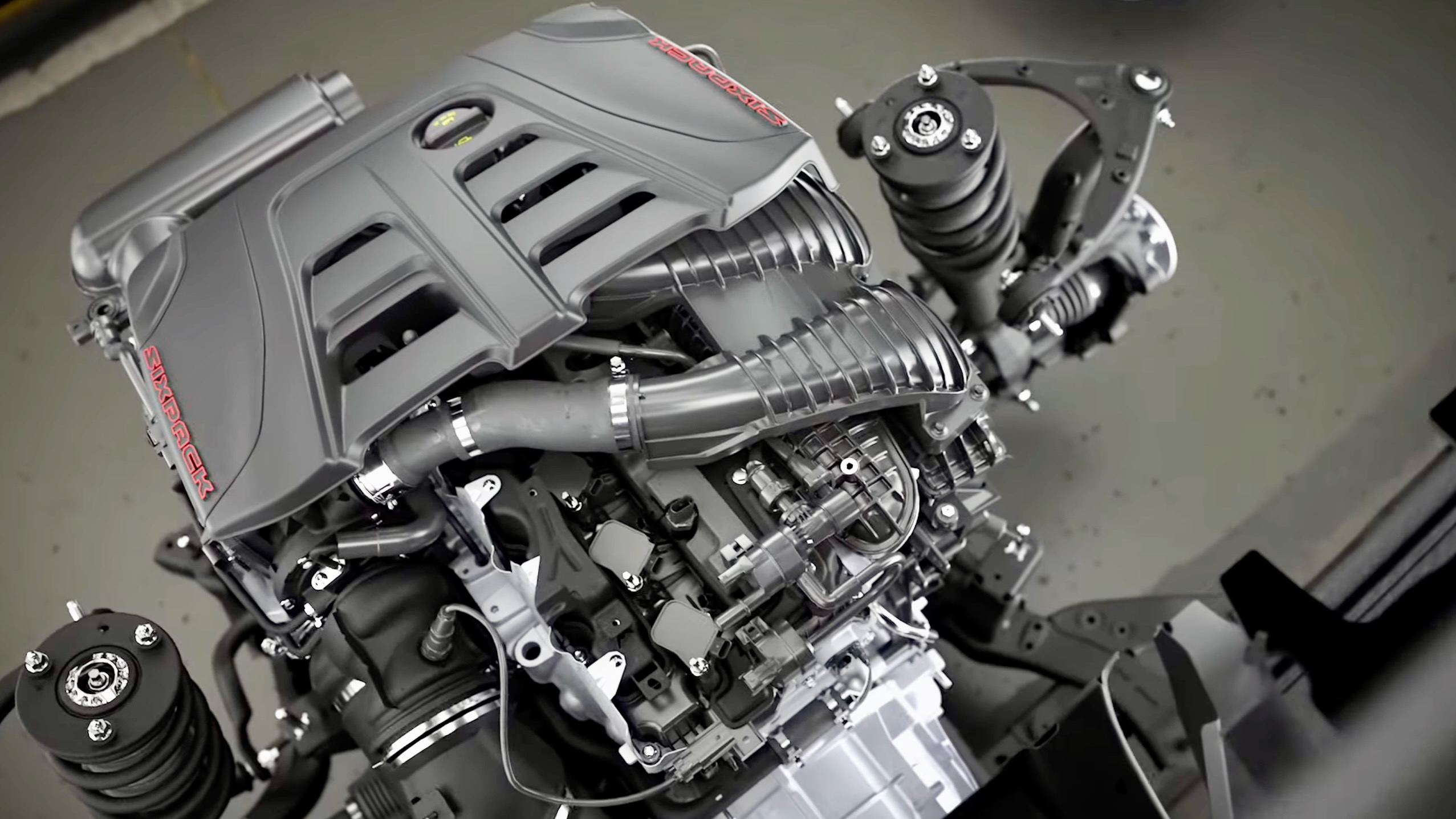
As we look to the future of the Charger nameplate, the introduction of the HURRICANE engines marks a significant leap forward in performance, efficiency, and innovation. Designed to propel the 2025 Dodge Charger into a new era of automotive excellence, these powerhouses embody the spirit of muscle with a modern twist.
Let’s delve into the specs of these cutting-edge engines and explore how they will shape the Charger lineup for years to come.
The HURRICANE engines come in two variants: Standard-Output (S/O) and High-Output (H/O), each tailored to meet specific performance needs while maximizing efficiency.
The HURRICANE S/O variant is optimized for fuel economy without compromising on power. Boasting an impressive output of 420 horsepower and 450 lb.-ft. of torque, this engine is a testament to the advancements in automotive engineering. Its cooled exhaust gas circulation (EGR) system ensures enhanced fuel efficiency, making it an ideal choice for everyday driving.
On the other hand, the HURRICANE H/O variant is all about unleashing maximum performance. With over 550 horsepower and 475 lb.-ft. of torque at its disposal, this engine is engineered to deliver exhilarating acceleration and unmatched thrills on the road. Whether tearing down the highway or conquering the track, the HURRICANE H/O variant is poised to redefine the boundaries of muscle car performance.
Behind the roaring power and exceptional performance of the HURRICANE engines lies a symphony of cutting-edge technologies, meticulously crafted to push the boundaries of automotive engineering. Let’s dive into the advanced innovations that power these formidable engines and set them apart as leaders in their class.
- Twin-Turbocharged Configuration: At the heart of the HURRICANE engines are twin low-inertia, high-flow turbochargers. This dual-turbo setup ensures rapid response to throttle inputs, delivering instant acceleration and seamless power delivery across the RPM range. By compressing intake air, the turbochargers boost engine performance while maximizing fuel efficiency.
- Plasma Transfer Wire Arc (PTWA) Coating: Inside the cylinders, a revolutionary PTWA coating revolutionizes engine durability and efficiency. This ultra-thin, low-friction wear surface minimizes friction, reducing energy loss and improving fuel efficiency. With ten times the wear resistance of traditional cylinder liners, the PTWA coating ensures long-lasting performance and reliability.
- High-Pressure Direct Fuel Injection: The HURRICANE engines utilize high-pressure direct fuel injection technology, with injectors mounted centrally in the cylinder head combustion chamber. This precise fuel delivery system promotes finer atomization and optimal air/fuel mixture, enhancing combustion efficiency and maximizing power output while minimizing emissions.
- Dual Overhead Camshafts with Variable Valve Timing: Dual overhead camshafts (DOHC) with fully independent variable valve timing (VVT) ensure precise control over valve operation, optimizing engine performance under varying driving conditions. By adjusting valve timing and lift, the HURRICANE engines deliver optimal power and efficiency across the entire RPM range.
- Engine Stop-Start Function: To further enhance fuel efficiency, the HURRICANE engines feature an engine stop-start (ESS) function. This system automatically shuts off the engine when the vehicle comes to a stop, such as at traffic lights or in heavy traffic, and restarts it seamlessly when the accelerator is pressed. By reducing idle fuel consumption, the ESS function conserves fuel and minimizes emissions.
- Water-to-Air Charge Cooling System: Engine-mounted water-to-air charge coolers reduce intake air temperature before entering the combustion chamber, improving engine efficiency and power output. Cooler air is denser, allowing for advanced ignition timing and optimal combustion, resulting in increased horsepower and torque while reducing the risk of detonation.
- Continuously Variable Displacement Oil Pump: A continuously variable displacement oil pump tailors oil flow to engine demand, reducing frictional losses and optimizing fuel efficiency. By adjusting oil flow based on engine load and speed, the oil pump minimizes energy loss and maximizes engine performance, contributing to overall fuel savings.
- High-Flow Ball-Valve Thermostat: The HURRICANE engines feature a high-flow ball-valve thermostat that minimizes restriction in the cooling system, reducing mechanical losses and optimizing engine cooling efficiency. By maintaining consistent coolant flow, the thermostat ensures optimal engine operating temperature, enhancing performance and durability.
2025 Dodge Charger SIX PACK –
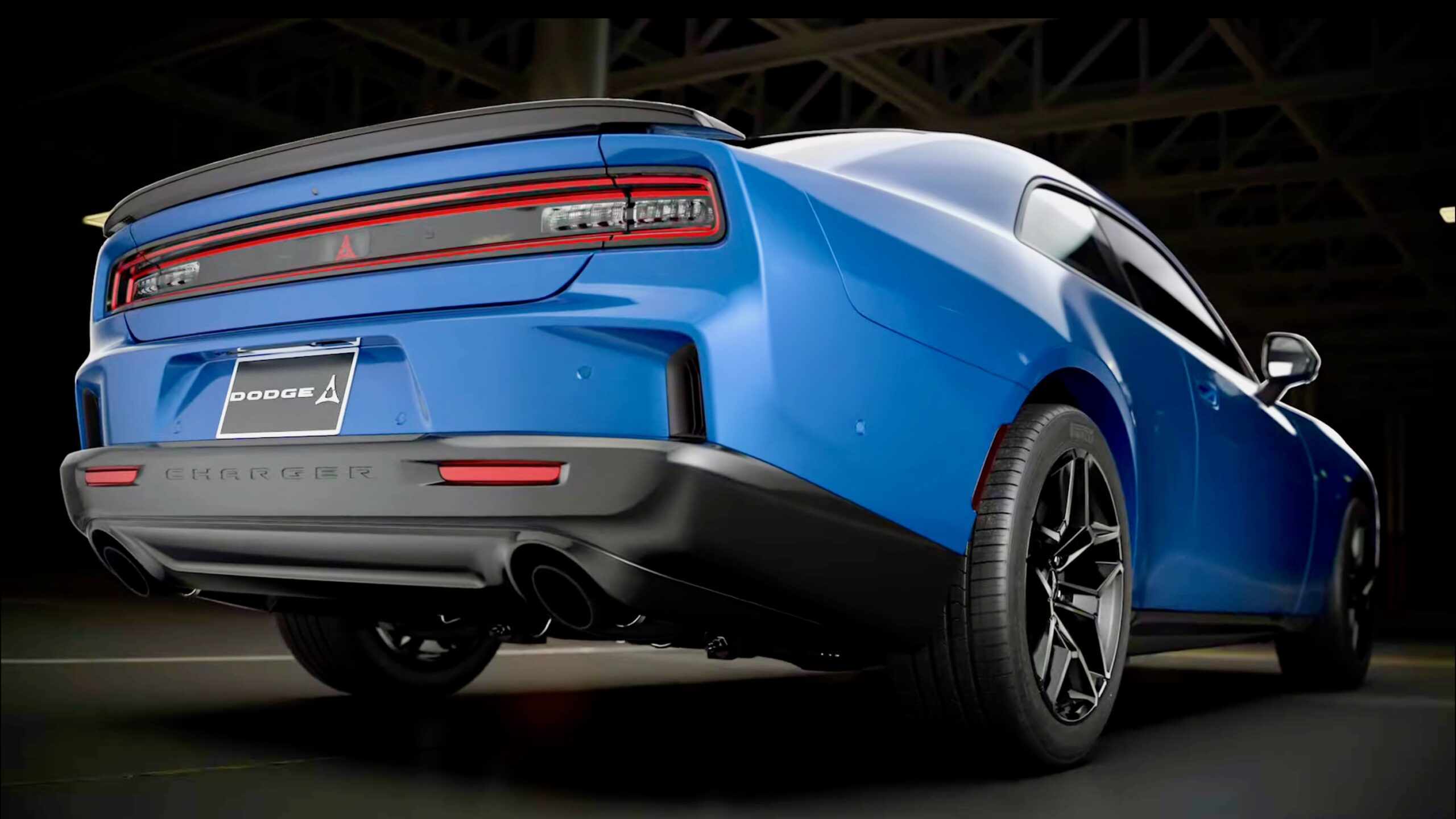
By integrating these state-of-the-art technologies, the HURRICANE engines achieve unparalleled levels of performance, efficiency, and reliability. With their revolutionary design and groundbreaking innovations, they set a new standard for automotive excellence and ensure that the Charger nameplate remains at the forefront of automotive innovation for years to come.
We can’t wait for the first quarter of 2025 to get here because we want to get our hands on these new HURRICANE engines under the hood of the new SIX PACK models to see how they compare to the outgoing HEMI®-powered Chargers and Challengers.


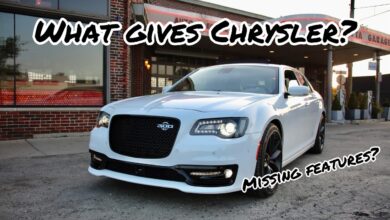
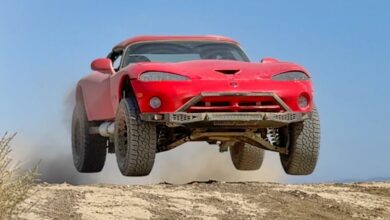


19 replies
Loading new replies...
Join the full discussion at the Mopar Insiders Forum →